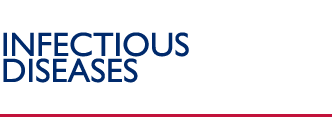Expanded Response to Tuberculosis: What USAID Will Do
c) Address TB HIV co-infection
HIV/AIDS and TB co-infection also presents special challenges to the expansion and effectiveness of DOTS programs and the STOP TB Strategy. TB accounts for one-third of AIDS deaths worldwide and is one of the most common causes of morbidity in people living with HIV/AIDS (PLWHA). Currently, about 33 million people are HIV-infected and at least one-third are also infected with TB. The dual epidemics of TB and HIV are particularly pervasive in Africa, where HIV has been the single most important factor contributing to the increasing incidence of TB over the last ten years. In some countries of sub-Saharan Africa, up to 70 percent of patients with active TB disease are also HIV-positive. The dual epidemics are of growing concern in Asia, where two-thirds of TB-infected people live and where TB now accounts for 40 percent of AIDS deaths. Eastern Europe and the Former Soviet Union have the fastest growing HIV epidemic in the world, and a factor that could exacerbate problems with the MDR-TB epidemic in these regions. The overlap of TB/HIV co-infection with MDR-TB and XDR-TB presents a tremendous challenge and threatens progress in controlling both TB and HIV/AIDS.
Persons co-infected with HIV and TB are 30 times more likely to progress to active TB disease. Infection with TB enhances replication of HIV and may accelerate the progression of HIV infection to AIDS. Fortunately, TB treatment for HIV-positive patients under DOTS is just as effective as it is for people who are HIV-negative. In addition, clinical trials have shown that prophylaxis using anti-TB drugs can prevent or decrease the likelihood of TB infection from progressing to active TB disease in an HIV-infected person, making it an important intervention for increasing the length and quality of life of HIV-infected people, with benefits to their families and communities.
Within the USG, PEPFAR takes the lead in funding and implementation of TB/HIV co-infection activities, however USAID’s TB activities are closely coordinated with PEPFAR. Given the importance of TB/HIV as part of a comprehensive TB program, USAID supports some specific TB/HIV activities within the Agency’s TB programs and closely coordinates efforts with PEPFAR. Specifically, USAID supports the three-fold strategy established in 2004 by WHO: to enhance collaborative efforts between TB and HIV/AIDS programs; to decrease the burden of TB in PLWHA; and to decrease the burden of HIV in TB patients. To address the first strategy, USAID supports coordination of TB and HIV/AIDS services by improving collaboration among both programs, host countries and donor agencies, NGOs, and research institutions; developing training programs for TB specialists/programs managers on HIV counseling and testing and management of co-infected patients; strengthening the links between TB services to HIV testing and HIV care services; and exploring the use of alternative faith-based organizations in such approaches. Such coordination is essential in ensuring early diagnosis, appropriate referral, and prompt, quality care for each disease.
To decrease the burden of TB in people living with HIV/AIDS, USAID assistance is designed to support improvements in TB prevention, screening, and treatment through links with facilities providing antiretroviral (ART) treatment services. In 2006, only 0.9 percent of HIV-positive patients were screened for TB. Such a low rate of screening for TB among PLWHA as well as the difficulties associated with diagnosis of TB in persons with HIV/AIDS contributes to delayed diagnosis of TB. USAID supports programs that strengthen and expand HIV surveillance to improve the quality of data on co-infection and epidemiological trends. USAID also supports programs that promulgate WHO standards in the provision of isoniazid preventive therapy (IPT) to HIV/AIDS patients with latent infection to prevent progression to active disease in accordance with national policies. Infection control measures in clinical settings where patients with HIV/AIDS and TB mix are also supported.
Finally, USAID supports programs and operations research that seek to decrease the burden of HIV in TB patients. Support is provided to increase access to HIV-testing and counseling and establish a system of referrals with HIV/AIDS programs and by training TB program personnel in HIV testing. Based on WHO recommendations, USAID supports programs that promote the use of co-trimoxazole preventive therapy in adults and children living with HIV/AIDS and ARVs in eligible TB patients. USAID supports pilot service delivery models for reaching co-infected patients, monitors and analyzes the effectiveness of such models, and documents these experiences.
|


